
Keywords: Gene drive

|
Talking About Gene Drive in Uganda: The Need for Science Communication to Underpin EngagementHartley, S., Stelmach, A., Opesen, C., Openjuru, G. L., and Neema, S., Science Communication, 2024.
Uganda may host the world’s first field trials of gene drive mosquitoes for malaria control. Global North discourses pre-suppose African publics have access to information about gene drive and are ready to make decisions about its governance. We explore assumptions about the ... Keywords: drosophila, Gene drive, homing gene drive, insecticide susceptiblitiy |
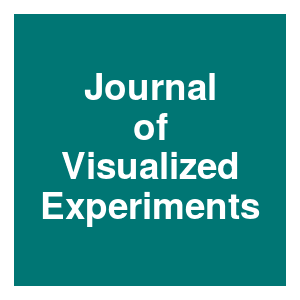
|
Quantifying Fitness Costs in Transgenic Aedes aegypti MosquitoesWilliams, A. E., Sanchez-Vargas, I., Martin, L. E., Martin-Martin, I., Bennett, S., Olson, K. E., Calvo, E., The Journal of Visualized Experiments, 199. 2024.
The present protocol describes how to measure common life parameter data in Aedes aegypti mosquitoes, including fecundity, wing size, fertility, sex ratio, viability, development times, male contribution, and adult longevity. Keywords: drosophila, Gene drive, homing gene drive, insecticide susceptiblitiy |

|
Flight Against Infections: The Role of Genetically Engineered Mosquitoes, with Dr. Stephanie JamesEeKs on Health, YouTube, 2024.
In this episode of Causes or Cures, Dr. Eeks chats with Dr. Stephanie James about the potential use of genetically modified mosquitoes (GMMs) to fight diseases that mosquitoes carry and spread, such as Malaria and Dengue Fever. In the podcast, Dr. James provides an overview ... Keywords: drosophila, Gene drive, homing gene drive, insecticide susceptiblitiy |

|
CRISPR could eradicate horrific parasite that’s killing cattleKristin Houser, Freethink, 2024.
Uruguay is developing a CRISPR gene drive to eradicate the New World screwworm, a parasitic fly that kills cattle in a painful, grisly fashion. Releasing it into the wild would have risks, but if it works, it could help rid South America of this horrific agricultural pest. The ... Keywords: drosophila, Gene drive, homing gene drive, insecticide susceptiblitiy |

|
Un1Cas12f1 and Cas9 gene drive in HSV1: viruses that ‘infect’ virusesQiaorui Yao, Zhuangjie Lin, Keyuan Lai, Xianying Zeng, Guanxiong Lei, Tongwen Zhang, Hongsheng Dai, bioRxiv, 2024.
Synthetic CRISPR-Cas9 gene drive has been developed as a potential tool to control harmful species. However, Cas9 gene drive faces high resistance rate and mitigation strategies developed so far are difficult to implement. Furthermore, studying the resistance to gene drive is ... Keywords: drosophila, Gene drive, homing gene drive, insecticide susceptiblitiy |

|
Gene Drive Systems To Control Aedes Aegypti Mosquitoes Make HeadwayJoshua Ang, Outreach Network for Gene Drive Research, 2024.
Aedes aegypti mosquitoes are known vectors of several diseases, including dengue, chikungunya, yellow fever, and Zika, which impact millions of people worldwide each year. The effectiveness of existing insecticide-based methods to control this mosquito is threatened by growing ... Keywords: drosophila, Gene drive, homing gene drive, insecticide susceptiblitiy |
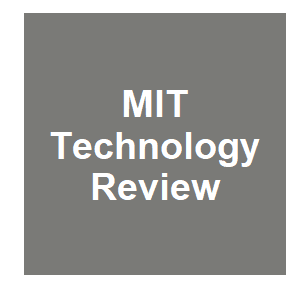
|
Uruguay wants to use gene drives to eradicate devastating screwwormsAbdullahi Tsanni, MIT Technology Review, 2024.
On a warm, sunny day in Montevideo, Uruguay, the air is smogless and crisp. Inside a highly secured facility at the National Institute of Agricultural Research (INIA) are a sophisticated gene gun, giant microscopes, and tens of thousands of gene-edited flies, their bright blue ... Keywords: drosophila, Gene drive, homing gene drive, insecticide susceptiblitiy |

|
Taking the fight against disease to mosquitoesGregory Devine, Setopati, 2024.
In the medium term it's likely that suppression strategies involving self-limiting genetic modifications, Wolbachia infection and irradiation will be extended to a small number of our most important mosquito vectors of disease. Keywords: drosophila, Gene drive, homing gene drive, insecticide susceptiblitiy |
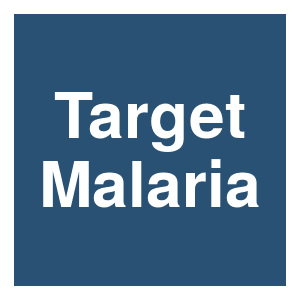
|
“Mozzie Drive” Card Game rulesKatie Willis, Ace North, Target Malaria, 2024.
Mozzie Drive is an educational card game that demonstrates how gene drive technology could be used to reduce populations of malaria mosquitoes. To download the game for free, please visit: https://targetmalaria.org/why-malaria... . This game was designed by Dr. Katie Willis ... Keywords: drosophila, Gene drive, homing gene drive, insecticide susceptiblitiy |
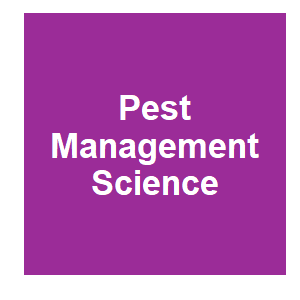
|
Acetylcholine esterase of Drosophila melanogaster: a laboratory model to explore insecticide susceptibility gene drivesHernandes, N., Qi, X.M., Bhide, S., Brown, C., Camm, B.J., Baxter, S.W. and Robin, C., Pest Management Science, 2024.
One of the proposed applications of gene drives has been to revert pesticide resistant mutations back to the ancestral susceptible state. Insecticides that have become ineffective because of the rise of resistance could have reinvigorated utility and be used to suppress pest ... Keywords: drosophila, Gene drive, homing gene drive, insecticide susceptiblitiy |

|
Biotech Mosquitoes Can Help to Regain Ground in Fight Against MalariaFlorence Banoba, East News, 2024.
In response to the recent opinion articles that ran in the National print and online media in the last couple of days (1st and 5th February, 2024), regarding the use of GMO technology as a tool in the fight against malaria, I wish to address the writer’s broad-brush dismissal ... Keywords: drosophila, Gene drive, homing gene drive, insecticide susceptiblitiy |

|
SPOTLIGHT: Gene Drives for Malaria Elimination in AfricaIfakara Health Institute, YouTube, 2024.
This SPOTLIGHT Series features Dr. Marceline Finda, a distinguished Research Scientist at Ifakara Health Institute. The insightful 20-minute discussion centered around the topic: "Gene Drives for Malaria Elimination in Africa." Keywords: drosophila, Gene drive, homing gene drive, insecticide susceptiblitiy |

|
Off the news: Gene-altered mosquitoes to the rescueStar Advertiser, 2024.
A legal attempt to block deployment of genetically modified mosquitoes in a Maui forest was rejected in Circuit Court on Tuesday — cause for celebration among those hoping to save near-extinct species of Hawaiian honeycreepers. State and federal wildlife officials plan a staged ... Keywords: drosophila, Gene drive, homing gene drive, insecticide susceptiblitiy |
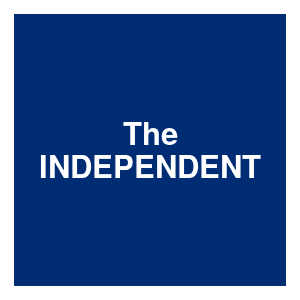
|
Opinion: A cautionary tale of experimenting with genetically modified mosquitoes in UgandaBarbara Ntambirweki, The Independent, 2024.
The Uganda Virus Research Institute is pressing forward with gene drive technology which provides a way to rapidly, permanently, and genetically modify wild animals or plants. Gene drive organisms, are a genetically modified organism (GMO) designed to spread a genetic ... Keywords: drosophila, Gene drive, homing gene drive, insecticide susceptiblitiy |

|
Revolutionary Gene Drive Could Provide Solution for Agricultural Pest ControlMaría Alejandra Trujillo, Breaking News Network, 2024.
The crux of the gene drive hinges on the process of sex determination in medflies. The drive effectively converts genetic females into fertile XX males, which, unlike their female counterparts, are harmless to crops. This innovative approach presents a possibility for a more ... Keywords: drosophila, Gene drive, homing gene drive, insecticide susceptiblitiy |

|
Otago GE Wasp Project Violates International Gene Drive AgreementGE-Free NZ, Scoop, 2024.
Professor Dearden, Otago University, has received $11 million from the Ministry of Business, Innovation and Enterprise (MBIE) to engineer wasps using gene drive technology. He is only consulting with Māori and regulators, ignoring and side-lining the views of other concerned New ... Keywords: drosophila, Gene drive, homing gene drive, insecticide susceptiblitiy |

|
Gene driver flies and quantum finance: News from ImperialBryony Ravate, Hayley Dunning, Imperial College London, 2024.
Researchers have created the first gene drive for the Mediterranean fruit fly (medfly), a global agricultural pest affecting food production. The team was led by Dr Nikolai Windbichler and Dr Angela Meccariello at Imperial's Department of Life Sciences, and included ... Keywords: drosophila, Gene drive, homing gene drive, insecticide susceptiblitiy |

|
Transforming malaria prevention and control: the prospects and challenges of gene drive technology for mosquito managementYusuf Amuda Tajudeen, Habeebullah Jayeola Oladipo, Iyiola Olatunji Oladunjoye, Muhammad Kamaldeen Oladipo, Hameedat Damilola Shittu, Imam-Fulani Abdulmumeen, Abdullateef Opeyemi Afolabi and Mona Said El-Sherbini, Annals of Medicine, 55. 2024.
In the era of insecticides and anti-malarial drug resistance, gene drive technology holds considerable promise for malaria control. Gene drive technology deploys genetic modifications into mosquito populations to impede their ability to transmit the malaria parasite. This can be ... Keywords: drosophila, Gene drive, homing gene drive, insecticide susceptiblitiy |

|
Gene drive and genetic sex conversion in the global agricultural pest Ceratitis capitataMeccariello, A., Hou, S., Davydova, S. et al., Nature Communications, 15:372. 2024.
Homing-based gene drives are recently proposed interventions promising the area-wide, species-specific genetic control of harmful insect populations. Here we characterise a first set of gene drives in a tephritid agricultural pest species, the Mediterranean fruit fly Ceratitis ... Keywords: drosophila, Gene drive, homing gene drive, insecticide susceptiblitiy |

|
Gene Drives: Mechanisms and Key Research, ExplainedJulia Bauman, 60 Second Science, 2024.
A technical primer on CRISPR-based gene drives, which hold massive potential for mitigating the harms invoked by some species. We cover what a gene drive is, how it works at the genetic level, and summarize key safety & efficiency features developed in recent years. Keywords: drosophila, Gene drive, homing gene drive, insecticide susceptiblitiy |
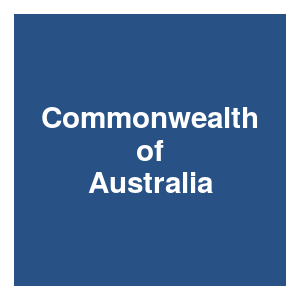
|
Consultation on a draft National Gene Drive Policy GuideCommonwealth of Australia (Department of Health and Aged Care), National Gene Technology Scheme, 2024.
The term gene drive is used to describe organisms which have been genetically modified to increase the rate for a particular trait to spread through a sexually reproducing population, spreading the genes or traits through a species at a faster rate than normal inheritance. ... Keywords: drosophila, Gene drive, homing gene drive, insecticide susceptiblitiy |

|
CRISPR engineered viruses could render other viruses harmlessMichael Le Page, New Scientist, 2023.
A virus genetically engineered to spread its DNA to other viruses via CRISPR gene editing has done exactly that in tests in mice. The hope is that these viruses could alter others, such as herpes, in a way that prevents them from causing symptoms. “It’s a new technology,” ... Keywords: drosophila, Gene drive, homing gene drive, insecticide susceptiblitiy |

|
Gene drives, mosquitoes, and ecosystems: An interdisciplinary approach to emerging ethical concernsRicardo D. Moreno, Luca Valera, Cristián Borgoño, Juan Carlos Castilla, José Luis Riveros, Frontiers in Environmental Science, 11. 2023.
Gene drives are genetic elements that in sexually reproducing organisms spread faster than those transmitted through a Mendelian fashion. Since gene drives can be engineered to modify different aspects of physiology and reproduction, they have been proposed as a new and ... Keywords: drosophila, Gene drive, homing gene drive, insecticide susceptiblitiy |

|
Advancements in Gene Editing: Using CRISPR-Cas9 and Gene Drive Technology to Neutralize VirusesAnonymous, News Directory 3, 2023.
Researchers from the US Fred Hutchinson Cancer Research Center recently published research results in the international academic journal “Nature” demonstrating that herpes virus type 1 (HSV-1) was neutralized using “Gene Drive” technology . Gene drive refers to a ... Keywords: drosophila, Gene drive, homing gene drive, insecticide susceptiblitiy |

|
Communicating Creatively About Genetically Modified MosquitoesLorraine Gibson, Target Malaria, 2023.
In 2018, the Target Malaria team at Imperial College London published a landmark paper in Nature Biotechnology. The study demonstrated how gene drive mosquitoes successfully suppressed a population of wild-type malaria mosquitoes, marking a significant milestone for gene ... Keywords: drosophila, Gene drive, homing gene drive, insecticide susceptiblitiy |

|
African scientist could wipe out malaria by editing mosquito DNANimi Princewill, CNN, 2023.
Malaria is a leading cause of death in Burkina Faso, where nearly all of the West African nation’s 22 million inhabitants, especially children, are at risk of the disease, according to the World Health Organization. Malaria killed nearly 19,000 people in Burkina Faso in 2021, ... Keywords: drosophila, Gene drive, homing gene drive, insecticide susceptiblitiy |

|
To End Malaria In Africa, a Scientist From Africa Invented Gene Drive Technology.Salman Ahmad, CTN News, 2023.
Abdoulaye Diabate, a scientist from Africa, is currently working on a groundbreaking technology called ‘gene drive’ that has the potential to eradicate malaria or the mosquitoes that cause it from the continent. Diabate, who received the prestigious 2023 Falling Walls Prize ... Keywords: drosophila, Gene drive, homing gene drive, insecticide susceptiblitiy |

|
Gene Drive: Engineered viruses take on their own kind in a new studyRizwan Choudhury, Interesting Engineering, 2023.
Scientists are exploring a radical idea to combat viral infections: use viruses against themselves. They are testing whether introducing modified viruses into people with the same natural viruses can spread a gene that destroys the infection. This has yet to be done successfully ... Keywords: drosophila, Gene drive, homing gene drive, insecticide susceptiblitiy |

|
Gene Drive Technology Unlocks Innovative Potential Solutions At The Intersection Of Climate Change And Public HealthKrystal Birungi, African Media Agency, 2023.
The inaugural ‘Day of Health’ at the UN Climate Conference (COP-28) highlighted the dramatic impact of climate change on health, diseases and in particular on malaria. Heads of State and climate experts converged in Dubai to emphasise the indisputable link between climate ... Keywords: drosophila, Gene drive, homing gene drive, insecticide susceptiblitiy |

|
Transformative Approaches for Sustainable Weed Management: The Power of Gene Drive and CRISPR-Cas9Kumam, Y.; Trick, H.N.; Vara Prasad, P.V.; Jugulam, M., Genes, 14. 2023.
Weeds can negatively impact crop yields and the ecosystem’s health. While many weed management strategies have been developed and deployed, there is a greater need for the development of sustainable methods for employing integrated weed management. Gene drive systems can be ... Keywords: drosophila, Gene drive, homing gene drive, insecticide susceptiblitiy |

|
A homing rescue gene drive with multiplexed gRNAs reaches high frequency in cage populations but generates functional resistanceJingheng Chen, Shibo Hou, Ruobing Feng, Xuejiao Xu, Nan Liang, Jackson Champer, bioRxiv, 2023.
CRISPR homing gene drive is a potent technology with considerable potential for managing populations of medically and agriculturally significant insects. It induces a bias in the inheritance of the drive allele in progeny, rapidly spreading desired genes throughout the ... Keywords: drosophila, Gene drive, homing gene drive, insecticide susceptiblitiy |

|
Rescue by gene swamping as a gene drive deployment strategyKeith D. Harris, Gili Greenbaum, Cell Reports, 42. 2023.
Gene drives are genetic constructs that can spread deleterious alleles with potential application to population suppression of harmful species. As gene drives can potentially spill over to other populations or species, control measures and fail-safe strategies must be considered. ... Keywords: drosophila, Gene drive, homing gene drive, insecticide susceptiblitiy |

|
Can Gene Drive Address Health and Conservation Challenges in the Philippines?Kristine Grace N. Tome, Science Speaks, 2023.
ISAAA Inc., in partnership with the Outreach Network for Gene Drive Research and the Malaysian Biotechnology Information Centre (MABIC), gathered approximately 834 online participants during the webinar Genetic Tools for Conservation and Health: What's the Role of Gene Drives? ... Keywords: drosophila, Gene drive, homing gene drive, insecticide susceptiblitiy |

|
Invasive Feral Cats Could Be Wiped Out Using Genetic ModificationJess Thomson, Newsweek, 2023.
Hordes of feral cats terrorizing native species in Australia could be combatted using a special type of genetic engineering, scientists have suggested. The cats, which came to Australia via European colonizers, regularly kill native mammals, birds, and reptiles, including ... Keywords: drosophila, Gene drive, homing gene drive, insecticide susceptiblitiy |

|
Manipulating the Destiny of Wild Populations Using CRISPRRaban R, Marshall JM, Hay BA, Akbari OS., Annual Reviews, 57:361-390. 2023.
Genetic biocontrol aims to suppress or modify populations of species to protect public health, agriculture, and biodiversity. Advancements in genome engineering technologies have fueled a surge in research in this field, with one gene editing technology, CRISPR, leading the ... Keywords: drosophila, Gene drive, homing gene drive, insecticide susceptiblitiy |

|
A framework for identifying fertility gene targets for mammalian pest controlClark, A. C., Edison, R., Esvelt, K., Kamau, S., Dutoit, L., Champer, J., Champer, S. E., Messer, P. W., Alexander, A., & Gemmell, N. J., Molecular Ecology Resources, 00:1–14. 2023.
Fertility-targeted gene drives have been proposed as an ethical genetic approach for managing wild populations of vertebrate pests for public health and conservation benefit. This manuscript introduces a framework to identify and evaluate target gene suitability based on ... Keywords: drosophila, Gene drive, homing gene drive, insecticide susceptiblitiy |

|
What are gene drives, and how can they help eradicate invasive species in Australia?Dr. Ellen Cottingham, ABC News (Australia Broadcasting Corporation), 2023.
The impact of feral cats and other invasive species is felt across Australia. Not only do they threaten native species, but they can also spread diseases to humans and livestock. Invasive species are estimated to cost Australia an eye-watering $25 billion annually, while the ... Keywords: drosophila, Gene drive, homing gene drive, insecticide susceptiblitiy |

|
Repeat mediated excision of gene drive elements for restoring wild-type populationsPratima R Chennuri, Josef Zapletal, Raquel D Monfardini, Martial Loth Ndeffo-Mbah, Zach N Adelman, Kevin M Myles, bioRxiv, 2023.
We demonstrate here that single strand annealing (SSA) repair can be co-opted for the precise autocatalytic excision of a drive element. Although SSA is not the predominant form of DNA repair in eukaryotic organisms, we increased the likelihood of its use by engineering direct ... Keywords: drosophila, Gene drive, homing gene drive, insecticide susceptiblitiy |

|
CRISPR-based gene drives generate super-Mendelian inheritance in the disease vector Culex quinquefasciatusTim Harvey-Samuel, Xuechun Feng, Emily M. Okamoto, Deepak-Kumar Purusothaman, Philip T. Leftwich, Luke Alphey & Valentino M. Gantz, Nature Communications, 14. 2023.
Culex mosquitoes pose a significant public health threat as vectors for a variety of diseases including West Nile virus and lymphatic filariasis, and transmit pathogens threatening livestock, companion animals, and endangered birds. Rampant insecticide resistance makes ... Keywords: drosophila, Gene drive, homing gene drive, insecticide susceptiblitiy |

|
Mosquito modification programme aiming to eliminate malaria receives US$15mHayley Dunning, Imperial College London, 2023.
Half of the world’s population is at risk of contracting malaria, a disease caused by parasites that are transmitted from one person to another through bites from Anopheles mosquitoes. In 2021 alone, there were over 247 million cases and 619,000 deaths from malaria, mostly ... Keywords: drosophila, Gene drive, homing gene drive, insecticide susceptiblitiy |

|
Gene Drive Mosquitoes from Islamic Perspective: A Preliminary DiscussionN. M. Isa, Global Journal Al-Thaqafah, 13. 2023.
Gene drive mosquitoes could spread desired trait, such as female infertility within a wild population at a rate higher than the normal inheritance rate and could eventually wipe out the population. Consequently, this makes gene drive mosquitoes one of the promising approaches in ... Keywords: drosophila, Gene drive, homing gene drive, insecticide susceptiblitiy |

|
The fight against malariaAnonymous, The Week, 2023.
Some scientists are betting on genetically modified mosquitoes. On the island nation of São Tomé and Príncipe, 200 miles off Africa’s west coast, University of California researchers are aiming to replace local mosquitoes with lab-tweaked insects that can’t transmit the ... Keywords: drosophila, Gene drive, homing gene drive, insecticide susceptiblitiy |

|
The fight against malariaThe Week US, The Week, 2023.
Some scientists are betting on genetically modified mosquitoes. On the island nation of São Tomé and Príncipe, 200 miles off Africa’s west coast, University of California researchers are aiming to replace local mosquitoes with lab-tweaked insects that can’t transmit the ... Keywords: drosophila, Gene drive, homing gene drive, insecticide susceptiblitiy |

|
Current Status of the Main Olive Pests: Useful Integrated Pest Management Strategies and Genetic ToolsE. Lantero, B. Matallanas and C. Callejas, Applied Sciences, 13. 2023.
Mediterranean olive cultivation faces challenges in the global environmental change context. Pests and diseases caused by arthropods such as Bactrocera oleae, Prays oleae, and certain vectors of Xylella fastidiosa are expected to increase and spread in part due to this global ... Keywords: drosophila, Gene drive, homing gene drive, insecticide susceptiblitiy |

|
Baker: New tools can change mosquitoes’ DNA, but should it be done?K. Baker, Fremont News Messenger, 2023.
Suppose Sauron — or perhaps Gandalf — were to offer you a magical golden ring with the power to rid the world of mosquitoes once and for all. And with their demise, to save countless human lives from the many diseases for which mosquitoes are the sole or primary vectors: ... Keywords: drosophila, Gene drive, homing gene drive, insecticide susceptiblitiy |

|
Fighting the battle against evolution: designing genetically modified organisms for evolutionary stabilityM. Arbel-Groissman, I. Menuhin-Gruman, D. Naki, S. Bergman and T. Tuller, Trends in Biotechnology, 2023.
Synthetic biology has made significant progress in many areas, but a major challenge that has received limited attention is the evolutionary stability of synthetic constructs made of heterologous genes. The expression of these constructs in microorganisms, that is, production of ... Keywords: drosophila, Gene drive, homing gene drive, insecticide susceptiblitiy |

|
CRISPR-based gene editing of non-homologous end joining factors biases DNA repair pathway choice toward single-strand annealing in Aedes aegyptiK. Chae, J. M. Overcash, C. Dawson, C. Valentin, H. Tsujimoto, K. M. Myles and Z. N. Adelman, Current Research in Biotechnology, 5:100133. 2023.
To maintain genome stability, eukaryotic cells orchestrate DNA repair pathways to process DNA double-strand breaks (DSBs) that result from diverse developmental or environmental stimuli. Bias in the selection of DSB repair pathways, either non-homologous end joining (NHEJ) or ... Keywords: drosophila, Gene drive, homing gene drive, insecticide susceptiblitiy |

|
Editorial: Genetic control of insect pest species—achievements, challenges, and perspectivesI. Häcker, D. Bartsch, A. Choo and F. Marec, Frontiers in Bioengineering and Biotechnology, 11. 2023.
Genetic control is a type ofbiological control and a promising approach to regulate insect pest populations in a species-specific manner. It is based on targeting the reproductive capacity of the target pest species to reduce population size to non-critical levels. The best known ... Keywords: drosophila, Gene drive, homing gene drive, insecticide susceptiblitiy |

|
Synthetic gene drives as an anthropogenic evolutionary forceA. D. Cutter, Trends in Genetics, 2023.
Genetic drive represents a fundamental evolutionary force that can exact profound change to the genetic composition of populations by biasing allele transmission. Herein I propose that the use of synthetic homing gene drives, the human-mediated analog of endogenous genetic ... Keywords: drosophila, Gene drive, homing gene drive, insecticide susceptiblitiy |

|
Moving beyond narrow definitions of gene drive: Diverse perspectives and frames enable substantive dialogue among science and humanities teachers in the United States and United KingdomS. Hartley, A. Stelmach, J. A. Delborne and S. K. Barnhill-Dilling, Public Understanding of Science, 2023.
Gene drive is an emerging biotechnology with applications in global health, conservation and agriculture. Scientists are preparing for field trials, triggering debate about when and how to release gene-drive organisms. These decisions depend on public understandings of gene ... Keywords: drosophila, Gene drive, homing gene drive, insecticide susceptiblitiy |

|
How CRISPR could help save crops from devastation caused by pestsE. F. Merchant, MIT Technology Review, 2023.
Researchers are now looking to add cutting-edge technology to California’s anti-Pierce’s arsenal, by changing the genome of the glassy-winged sharpshooter so that it can no longer spread the bacterium. Such a solution is possible thanks to CRISPR gene-editing technology, ... Keywords: drosophila, Gene drive, homing gene drive, insecticide susceptiblitiy |

|
Horizontal gene transfer from plant to whiteflyT. Islam, R. B. Azad, S. H. Kasfy, A. A. Rahman and T. Z. Khan, Trends in Biotechnology, 2023.
The recent discovery of the horizontal transfer of a toxin-neutralizing gene from plant to whitefly (Bemisia tabaci), a polyphagous insect, sparked a new area of study. In this forum, we discuss some potential biotechnological applications of this newly discovered knowledge in ... Keywords: drosophila, Gene drive, homing gene drive, insecticide susceptiblitiy |

|
Imperial startup Biocentis to develop genetic tech to control harmful insectsD. Silverman, Imperial College London, 2023.
The Imperial startup was founded in 2022 by Imperial researchers in partnership with technology-focused investment group Neurone to create a more effective and sustainable alternative to pesticides. While insects play an essential role in the global ecosystem, among the ... Keywords: drosophila, Gene drive, homing gene drive, insecticide susceptiblitiy |
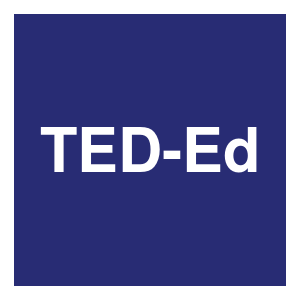
|
Ethical dilemma: Should we get rid of mosquitoes?Talya Hackett, TED-Ed, 2023.
Mosquitoes are responsible for more human deaths every year than any other animal, but very few of the 3,500 mosquito species actually transmit deadly diseases to humans. Scientists have been conducting experiments using engineered technologies called gene drives that could ... Keywords: drosophila, Gene drive, homing gene drive, insecticide susceptiblitiy |
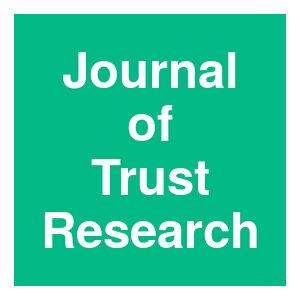
|
Trust in science and scientists: Effects of social attitudes and motivations on views regarding climate change, vaccines and gene drive technologyH. G. W. Dixson, A. F. Komugabe-Dixson, F. Medvecky, J. Balanovic, H. Thygesen and E. A. MacDonald, Journal of Trust Research, 2023.
Trust in science and scientists (TSS) is an increasingly important topic with respect to how science is applied within society. However, its role regarding specific issues may vary depending upon other psychosocial factors. In this study, we investigated how trust interacts with ... Keywords: drosophila, Gene drive, homing gene drive, insecticide susceptiblitiy |

|
Genes drive organisms and slippery slopesD. B. Resnik, R. F. Medina, F. Gould, G. Church and J. Kuzma, Pathog Glob Health, 2022.
The bioethical debate about using gene drives to alter or eradicate wild populations has focused mostly on issues concerning short-term risk assessment and management, governance and oversight, and public and community engagement, but has not examined big-picture- 'where is this ... Keywords: drosophila, Gene drive, homing gene drive, insecticide susceptiblitiy |

|
No Environmental Release of Gene Drive OrganismsAnonymous, STOP GENE DRIVES, 2022.
We urge governments to prevent the environmental release of gene drive organisms and to establish a global moratorium on the release of gene drive organisms at the UN Convention on Biological Diversity (CBD). Gene drives work against natural rules of inheritance forcing nearly ... Keywords: drosophila, Gene drive, homing gene drive, insecticide susceptiblitiy |

|
Gene drive technology to suppress invasive miceUniversity of Adelaide, Phys Org, 2022.
Researchers at the University of Adelaide have released their first findings on the potential effectiveness of revolutionary gene drive technology to control invasive mice. The team has developed a world-first proof of concept for the technology—called t-CRISPR—using ... Keywords: drosophila, Gene drive, homing gene drive, insecticide susceptiblitiy |
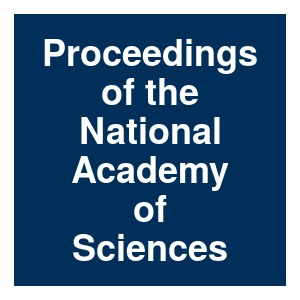
|
Leveraging a natural murine meiotic drive to suppress invasive populationsL. Gierus, A. Birand, M. D. Bunting, G. I. Godahewa, S. G. Piltz, K. P. Oh, A. J. Piaggio, D. W. Threadgill, J. Godwin, O. Edwards, P. Cassey, J. V. Ross, T. A. A. Prowse and P. Q. Thomas, Proceedings of the National Academy of Sciences, 119:e2213308119. 2022.
Invasive rodents are a major cause of environmental damage and biodiversity loss, particularly on islands. Unlike insects, genetic biocontrol strategies including population-suppressing gene drives with biased inheritance have not been developed in mice. Here, we demonstrate a ... Keywords: drosophila, Gene drive, homing gene drive, insecticide susceptiblitiy |

|
Why we need to talk about ‘gene-drive’ grey squirrelsL. Clarke, DevonLive, 2022.
Would the best way of controlling the UK’s rampant grey squirrel population be to spread genetic changes throughout the species? A new research film, to be shown next month at Exeter Phoenix, sees scientists, conservation and wildlife experts debate the use of emergent ... Keywords: drosophila, Gene drive, homing gene drive, insecticide susceptiblitiy |

|
Natural selfish genetic elements should not be defined as gene drivesM. A. Wells and R. A. Steinbrecher, Proceedings of the National Academy of Sciences, 119:e2201142119. 2022.
Gene drives are increasingly discussed in the political realm,and how the term is defined therefore has important impli-cations. The opinion piece from Alphey et al. (1) identifies alack of consensus on the definition and makes explicitchanges in how the terminology is being used ... Keywords: drosophila, Gene drive, homing gene drive, insecticide susceptiblitiy |

|
Manipulating Insect Sex Determination Pathways for Genetic Pest Management: Opportunities and ChallengesA. Siddall, T. Harvey-Samuel, T. Chapman and P. T. Leftwich, Frontiers in Bioengineering and Biotechnology, 10. 2022.
Sex determination pathways in insects are generally characterised by an upstream primary signal, which is highly variable across species, and that regulates the splicing of a suite of downstream but highly-conserved genes (transformer, doublesex and fruitless). In turn, these ... Keywords: drosophila, Gene drive, homing gene drive, insecticide susceptiblitiy |
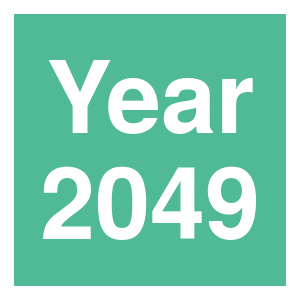
|
The fight against malariaF. Ammache, Year 2049, 2022.
Malaria is a disease we’ve been dealing with for thousands of years. Traces of the malaria parasite have been found in the remains of Egyptian mummies. Hippocrates described the fevers caused by malaria in Ancient Greece. The mosquito-filled Pontine Marshes protected Ancient ... Keywords: drosophila, Gene drive, homing gene drive, insecticide susceptiblitiy |
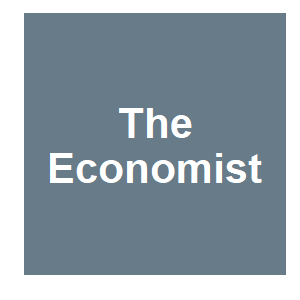
|
Podcast: How do you solve a problem like malaria?A. Jha, The Economist, 2022.
SQUASHING MALARIA could, over the next three decades, save as many lives as covid-19 has taken. We explore new ways to fight infections: from the introduction of the first malaria vaccines, to genetically modified mosquitoes Keywords: drosophila, Gene drive, homing gene drive, insecticide susceptiblitiy |

|
IMPACTOS AMBIENTAIS DA TÉCNICA DE GENE DRIVE PARA O CONTROLE DE EPIDEMIAS: ALCANCES E LIMITES DO PRINCÍPIO DA PRECAUÇÃON. R. Furtado, PERI Revista de Filosofia, 13. 2022.
The paper discusses the application of the precautionary principle in the management of environmental risks arising from the use of gene drives to control epidemics. Gene drives consist of a technique for creating genetically modified organisms, which are released into an ... Keywords: drosophila, Gene drive, homing gene drive, insecticide susceptiblitiy |

|
Public Deliberation about Gene Editing in the WildM. K. Gusmano, G. E. Kaebnick, K. J. Maschke, C. P. Neuhaus and B. C. Wills, Hastings Center Report, 51 Suppl 2:S2-s10. 2021.
Genetic editing technologies have long been used to modify domesticated nonhuman animals and plants. Recently, attention and funding have also been directed toward projects for modifying nonhuman organisms in the shared environment-that is, in the "wild." Interest in gene editing ... Keywords: drosophila, Gene drive, homing gene drive, insecticide susceptiblitiy |

|
Empowering Indigenous Knowledge in Deliberations on Gene Editing in the WildR. Taitingfong and A. Ullah, Hastings Center Report, 51 Suppl 2:S74-s84. 2021.
Proposals to release genetically engineered organisms in the wild raise complex ethical issues related to their safe and equitable implementation. While there is broad agreement that community and public engagement is vital to decision-making in this context, more discussion is ... Keywords: drosophila, Gene drive, homing gene drive, insecticide susceptiblitiy |

|
Mosquito transgenesis for malaria controlS. Dong, Y. Dong, M. L. Simões and G. Dimopoulos, Trends in Parasitology, 2021.
Malaria is one of the deadliest diseases. Because of the ineffectiveness of current malaria-control methods, several novel mosquito vector-based control strategies have been proposed to supplement existing control strategies. Mosquito transgenesis and gene drive have emerged as ... Keywords: drosophila, Gene drive, homing gene drive, insecticide susceptiblitiy |

|
Invasive Species Management: Informing Gene Drive ConsiderationsDavid O'Brochta and Hector Quemada, GeneConvene Global Collaborative, 2021.
The management, control and elimination of invasive species involves solving problems that have analogs to those anticipating the use of gene drive technologies to control and eliminate malaria in Africa. Avoiding unintended consequences from interventions designed to reduce or ... Keywords: drosophila, Gene drive, homing gene drive, insecticide susceptiblitiy |

|
Horizontal Transmission of the Symbiont Microsporidia MB in Anopheles arabiensisG. Nattoh, T. Maina, E. E. Makhulu, L. Mbaisi, E. Mararo, F. G. Otieno, T. Bukhari, T. O. Onchuru, E. Teal, J. Paredes, J. L. Bargul, D. M. Mburu, E. A. Onyango, G. Magoma, S. P. Sinkins and J. K. Herren, Frontiers in Microbiology, 12. 2021.
The recently discovered Anopheles symbiont, Microsporidia MB, has a strong malaria transmission-blocking phenotype in Anopheles arabiensis, the predominant Anopheles gambiae species complex member in many active transmission areas in eastern Africa. The ability of Microsporidia ... Keywords: drosophila, Gene drive, homing gene drive, insecticide susceptiblitiy |
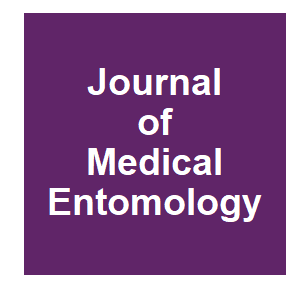
|
ReMOT Control Delivery of CRISPR-Cas9 Ribonucleoprotein Complex to Induce Germline Mutagenesis in the Disease Vector Mosquitoes Culex pipiens pallens (Diptera: Culicidae)X. X. Li, Y. Xu, H. B. Zhang, H. T. Yin, D. Zhou, Y. Sun, L. Ma, B. Shen and C. L. Zhu, Journal of Medical Entomology, 58:1202-1209. 2021.
The wide distribution of Culex (Cx.) pipiens complex mosquitoes makes it difficult to prevent the transmission of mosquito-borne diseases in humans. Gene editing using CRISPR/Cas9 is an effective technique with the potential to solve the growing problem of mosquito-borne ... Keywords: drosophila, Gene drive, homing gene drive, insecticide susceptiblitiy |

|
The legal regulation of gene drive technologiesC. Elves, Univeristy of Oxford, 2021.
Gene drive technologies purport to provide a panacea and yet in doing so present unprecedented risks that threaten to change, potentially irreversibly, the way in which we live in the world. Gene drive technologies raise questions about what ends societies ought to seek for their ... Keywords: drosophila, Gene drive, homing gene drive, insecticide susceptiblitiy |

|
Why do you think a gene drive approach could help with malaria and dengue?Outreach Network for Gene Drive Research, Outreach Network for Gene Drive Research, 2021.
Keywords: drosophila, Gene drive, homing gene drive, insecticide susceptiblitiy |

|
How do local communities participate in gene drive research?Outreach Network for Gene Drive Research, Outreach Network for Gene Drive Research, 2021.
Keywords: drosophila, Gene drive, homing gene drive, insecticide susceptiblitiy |

|
ReMOT Control Delivery of CRISPR-Cas9 Ribonucleoprotein Complex to Induce Germline Mutagenesis in the Disease Vector Mosquitoes Culex pipiens pallens (Diptera: Culicidae)X. X. Li, Y. Xu, H. B. Zhang, H. T. Yin, D. Zhou, Y. Sun, L. Ma, B. Shen and C. L. Zhu, Journal of Medical Entomology, 58. 2021.
The wide distribution of Culex (Cx.) pipiens complex mosquitoes makes it difficult to prevent the transmission of mosquito-borne diseases in humans. Gene editing using CRISPR/Cas9 is an effective technique with the potential to solve the growing problem of mosquito-borne ... Keywords: drosophila, Gene drive, homing gene drive, insecticide susceptiblitiy |
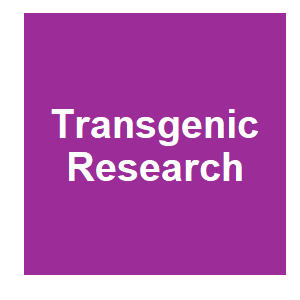
|
Playing God and tampering with nature: popular labels for real concerns in synthetic biologyL. Carter, A. Mankad, E. V. Hobman and N. B. Porter, Transgenic Research, 2021.
We present the findings from a large Australian study (N = 4593) which suggests ‘playing God’ objections and their variants can be multilayered and, at times, accompanied by meaningful information about risk perceptions. We use qualitative analysis of ope Keywords: drosophila, Gene drive, homing gene drive, insecticide susceptiblitiy |
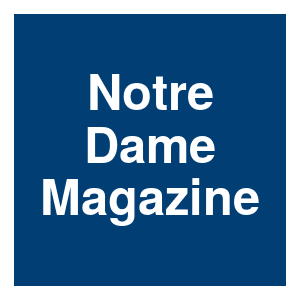
|
His Passion Was ContagiousD. C. McCool, Notre Dame Magazine, 2021.
Craig was an entomologist and vector biologist whose interest in mosquitoes and the diseases they transmit to people was as contagious as the pathogens themselves. Hesburgh could not have chosen a more driven faculty member. In his 38 years at Notre Dame, before he died in 1995 ... Keywords: drosophila, Gene drive, homing gene drive, insecticide susceptiblitiy |
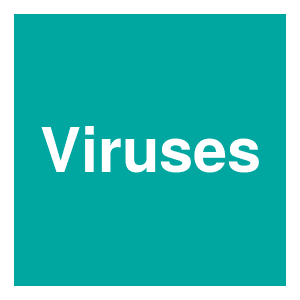
|
The Antiviral Small-Interfering RNA Pathway Induces Zika Virus Resistance in Transgenic Aedes aegyptiA. E. Williams, I. Sanchez-Vargas, W. R. Reid, J. Y. Lin, A. W. E. Franz and K. E. Olson, Viruses, 12:18. 2020.
We used CRISPR/Cas9 to re-target a previously characterized locus (Chr2:321382225) and engineered mosquitoes expressing an inverted repeat (IR) dsRNA against the NS3/4A region of the ZIKV genome. Small RNA analysis revealed that the IR effector triggered the mosquito's siRNA ... Keywords: drosophila, Gene drive, homing gene drive, insecticide susceptiblitiy |

|
A patent review on strategies for biological control of mosquito vectorK. Parihar, M. Telang and A. Ovhal, World Journal of Microbiology and Biotechnology, 36:23. 2020.
This paper presents a comprehensive technology overview of patent documents disclosing biological agents for mosquito control. The patent analysis revealed that comparable number of patent documents were filed in two technology categories: non-recombinant agents and genetically ... Keywords: drosophila, Gene drive, homing gene drive, insecticide susceptiblitiy |

|
Design and analysis of CRISPR-based underdominance toxin-antidote gene drivesJ. Champer, S. E. Champer, I. K. Kim, A. G. Clark and P. W. Messer, Evolutionary Applications, 18. 2020.
We model drives which target essential genes that are either haplosufficient or haplolethal, using nuclease promoters with expression restricted to the germline, promoters that additionally result in cleavage activity in the early embryo from maternal deposition, and promoters ... Keywords: drosophila, Gene drive, homing gene drive, insecticide susceptiblitiy |

|
Advances in genetic engineering test democracy’s capacity for good decision-makingN. Kofler and R. Taitingfong, Boston Globe, 2020.
New advances in genetic engineering and their application for environmental conservation and public health are further testing our democracy’s capacity for good decision-making. With minimal public input, the Environmental Protection Agency recently approved the release of ... Keywords: drosophila, Gene drive, homing gene drive, insecticide susceptiblitiy |

|
Research and Innovation for biodiversity: what role for gene drive research?EP Intergroup CCBSD, European Bureau of Conservation and Development, 2020.
This webinar will provide an overview of how gene drive works and the problems it seeks to solve, introduce the most advanced research projects on gene drive in the sector of public health and conservation and present the work that international and European bodies such as WHO, ... Keywords: drosophila, Gene drive, homing gene drive, insecticide susceptiblitiy |

|
Maintenance management and eradication of established aquatic invadersD. Simberloff, Hydrobiologia, 22. 2020.
The rapid development of technologies based on genetics has engendered excitement about possibly eradicating or controlling terrestrial invaders, and such technologies may also prove useful for certain aquatic invaders. Methods of particular interest, alone or in various ... Keywords: drosophila, Gene drive, homing gene drive, insecticide susceptiblitiy |

|
The future of beef might be a sausage festN. Johnson, grist, 2020.
N. Johnson. (2020) grist. A media report on the creation of a cow with a sex ratio altering genetic change expected to lead to 3/4 of the cow's offspring being males. This type of sex ratio distortion results in gene drive and is also being considered to help control populations ... Keywords: drosophila, Gene drive, homing gene drive, insecticide susceptiblitiy |

|
Meet Cosmo the Frankenbull: Scientists genetically engineer a bull calf so that 75 per cent of its offspring will be maleJ. Pinkstone, Daily Mail, 2020.
J. Pinkstone (2020). Daily Mail. A media report on the creation of a cow with a sex ratio altering genetic change expected to lead to 3/4 of the cow's offspring being males. This type of sex ratio distortion results in gene drive and is also being considered to help control ... Keywords: drosophila, Gene drive, homing gene drive, insecticide susceptiblitiy |

|
Meet the first genetically modified bull. Why did scientists change itJ. Kessler, Free News, 2020.
J. Kessler (2020). Free News. UC Davis scientists have successfully introduced a bovine embryo, or the bovine SRY gene, which is responsible for the development of the male. This is the first demonstration of targeted gene insertion for large DNA sequences through embryo-mediated ... Keywords: drosophila, Gene drive, homing gene drive, insecticide susceptiblitiy |

|
Small-Molecule Control of Super-Mendelian Inheritance in Gene DrivesV. López Del Amo, B. S. Leger, K. J. Cox, S. Gill, A. L. Bishop, G. D. Scanlon, J. A. Walker, V. M. Gantz and A. Choudhary, Cell Reports, 31:107841. 2020.
Summary Synthetic CRISPR-based gene-drive systems have tremendous potential in public health and agriculture, such as for fighting vector-borne diseases or suppressing crop pest populations. These elements can rapidly spread in a population by breaching the inheritance limit of ... Keywords: drosophila, Gene drive, homing gene drive, insecticide susceptiblitiy |

|
Field performance of sterile male mosquitoes released from an uncrewed aerial vehicleJ. Bouyer, N. J. Culbert, A. H. Dicko, M. G. Pacheco, J. Virginio, M. C. Pedrosa, L. Garziera, A. T. M. Pinto, A. Klaptocz, J. Germann, T. Wallner, G. Salvador-Herranz, R. A. Herrero, H. Yamada, F. Balestrino and M. J. B. Vreysen, Science Robotics, 5:10. 2020.
Genetic control methods of mosquito vectors of malaria, dengue, yellow fever, and Zika are becoming increasingly popular due to the limitations of other techniques such as the use of insecticides. The sterile insect technique is an effective genetic control method to manage ... Keywords: drosophila, Gene drive, homing gene drive, insecticide susceptiblitiy |

|
CRISPR/Cas9 gene drive technology to control transmission of vector-borne parasitic infectionsM. Nateghi Rostami, Parasite Immunology, preprint:e12762. 2020.
Gene drive is the process of copying of an endonuclease-containing cassette that leads to increased frequency of inheritance of the desired traits in a targeted population. CRISPR/Cas9 technology is advancing genetic manipulation of insects in the field of gene drive ... Keywords: drosophila, Gene drive, homing gene drive, insecticide susceptiblitiy |

|
Can CRISPR gene drive work in pest and beneficial haplodiploid species?J. Li, O. Aidlin Harari, A.-L. Doss, L. L. Walling, P. W. Atkinson, S. Morin and B. E. Tabashnik, Evolutionary Applications, 2020.
Gene drives based on CRISPR/Cas9 have the potential to reduce the enormous harm inflicted by crop pests and insect vectors of human disease, as well as to bolster valued species. In contrast with extensive empirical and theoretical studies in diploid organisms, little is known ... Keywords: drosophila, Gene drive, homing gene drive, insecticide susceptiblitiy |

|
The development of complex and controversial innovations. Genetically modified mosquitoes for malaria eradicationV. Cisnetto and J. Barlow, Research Policy, 49:103917. 2020.
e use a longitudinal process approach and qualitative system dynamics modelling to study the development of genetically modified (GM) mosquitoes for malaria eradication in an African country. Keywords: drosophila, Gene drive, homing gene drive, insecticide susceptiblitiy |

|
Bioethical issues in genome editing by CRISPR-Cas9 technologyF. B. Ayanoglu, A. E. Elcin and Y. M. Elcin, Turkish Journal of Biology, 44:110-120. 2020.
Genome editing technologies have led to fundamental changes in genetic science. Among them, CRISPR-Cas9 technology particularly stands out due to its advantages such as easy handling, high accuracy, and low cost. It has made a quick introduction in fields related to humans, ... Keywords: drosophila, Gene drive, homing gene drive, insecticide susceptiblitiy |

|
Gene Drive – The Concept ExplainedGeneConvene Global Collaborative, GeneConvene Global Collaborative, 2020.
This short video is intended to serve as a short tutorial that explains the general idea of 'drive' or 'gene drive' in the context of genetics. It provides the viewer with a basic understanding of the key genetic processes underlying the patterns of inheritance with which most ... Keywords: drosophila, Gene drive, homing gene drive, insecticide susceptiblitiy |

|
Autosomal suppression and fitness costs of an old driving X chromosome in Drosophila testaceaG. Keais, S. Lu and S. Perlman, Journal of Evolutionary Biology, 2020.
Driving X chromosomes (XDs) are meiotic drivers that bias their own transmission through males by killing Y-bearing gametes. These chromosomes can in theory spread rapidly in populations and cause extinction, but many are found as balanced polymorphisms or as ?cryptic? XDs shut ... Keywords: drosophila, Gene drive, homing gene drive, insecticide susceptiblitiy |

|
Metaphor, Trust and Support for Non-native Species ControlP. A. Kohl, S. J. Collins and M. Eichholz, Environmental Communication, 14:672-685. 2020.
This experimental study used a representative sample of U.S. residents (N = 1,042) to test whether the use of the term "invasive" increases support for non-native species control efforts. The term invasive had a small influence on support for two out of three non-native species ... Keywords: drosophila, Gene drive, homing gene drive, insecticide susceptiblitiy |

|
Winning the tug-of-war between effector gene design and pathogen evolution in vector population replacement strategiesMarshall, J. M., R. R. Raban, N. P. Kandul, J. R. Edula, T. M. León and O. S. Akbari, Frontiers in Genetics, 10:1072. 2019.
While efforts to control malaria with available tools have stagnated, and arbovirus outbreaks persist around the globe, the advent of clustered regularly interspaced short palindromic repeat (CRISPR)-based gene editing has provided exciting new opportunities for genetics-based ... Keywords: drosophila, Gene drive, homing gene drive, insecticide susceptiblitiy |

|
Identification and characterisation of a Masculinizer homolog in the diamondback moth Plutella xylostellaHarvey-Samuel, T., V. C. Norman, R. Carter, E. Lovett and L. Alphey, Insect Molecular Biology, 2019:2019. 2019.
Recently, a novel sex-determination system was identified in the silkworm (Bombyx mori) in which a piRNA encoded on the female-specific W chromosome silences a Z-linked gene (Masculinizer) which would otherwise initiate male sex-determination and dosage compensation. ... Keywords: drosophila, Gene drive, homing gene drive, insecticide susceptiblitiy |
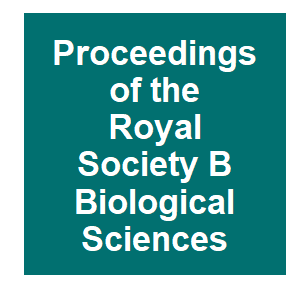
|
Effects of a male meiotic driver on male and female transcriptomes in the house mouseA. Lindholm, A. Sutter, S. Kunzel, D. Tautz and H. Rehrauer, Proceedings of the Royal Society B-Biological Sciences, 286:1-8. 2019.
Not all genetic loci follow Mendel's rules, and the evolutionary consequences of this are not yet fully known. Genomic conflict involving multiple loci is a likely outcome, as restoration of Mendelian inheritance patterns will be selected for, and sexual conflict may also arise ... Keywords: drosophila, Gene drive, homing gene drive, insecticide susceptiblitiy |
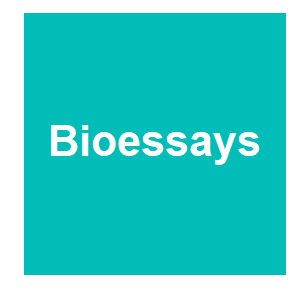
|
Gene Drives: Dynamics and Regulatory Matters-A Report from the Workshop “Evaluation of Spatial and Temporal Control of Gene Drives,” April 4-5, 2019, ViennaB. Giese, J. L. Friess, N. H. Barton, P. W. Messer, F. Debarre, M. F. Schetelig, N. Windbichler, H. Meimberg and C. Boete, Bioessays, 41:3. 2019.
Gene Drives are regarded as future tools with a high potential for population control. Due to their inherent ability to overcome the rules of Mendelian inheritance, gene drives (GD) may spread genes rapidly through populations of sexually reproducing organisms. A release of ... Keywords: drosophila, Gene drive, homing gene drive, insecticide susceptiblitiy |

|
A 2017 horizon scan of emerging issues for global conservation and biological diversitySutherland, WJB, P.; Broad, S.; Clout, M.; Connor, B.; Cote, I. M.; Dicks, L. V.; Doran, H.; Entwistle, A. C.; Fleishman, E.; Fox, M.; Gaston, K. J.; Gibbons, D. W.; Jiang, Z.; Keim, B.; Lickorish, F. A.; Markillie, P.; Monk, K. A.; Pearce-Higgins, J. W.; Peck, L. S.; Pretty, J.; Spalding, M. D.; Tonneijck, F. H.; Wintle, B. C.; Ockendon, N., Trends in Ecology & Evolution, 32:31-40. 2019.
We present the results of our eighth annual horizon scan of emerging issues likely to affect global biological diversity, the environment, and conservation efforts in the future. The potential effects of these novel issues might not yet be fully recognized or understood by the ... Keywords: drosophila, Gene drive, homing gene drive, insecticide susceptiblitiy |
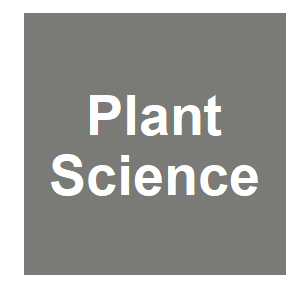
|
Herbicide resistant weeds: A call to integrate conventional agricultural practices, molecular biology knowledge and new technologiesV. E. Perotti, A. S. Larran, V. E. Palmieri, A. K. Martinatto and H. R. Permingeat, Plant Science, 290:110255. 2019.
Herbicide resistant (HR) weeds are of major concern in modern agriculture. This situation is exacerbated by the massive adoption of herbicide-based technologies along with the overuse of a few active ingredients to control weeds over vast areas year after year. Also, many other ... Keywords: drosophila, Gene drive, homing gene drive, insecticide susceptiblitiy |

|
Herbicide resistant weeds: A call to integrate conventional agricultural practices, molecular biology knowledge and new technologiesV. E. Perotti, A. S. Larran, V. E. Palmieri, A. K. Martinatto and H. R. Perrningeat, Plant Science, 290:15. 2019.
Herbicide resistant (HR) weeds are of major concern in modern agriculture. This situation is exacerbated by the massive adoption of herbicide-based technologies along with the overuse of a few active ingredients to control weeds over vast areas year after year. Also, many other ... Keywords: drosophila, Gene drive, homing gene drive, insecticide susceptiblitiy |

|
Synthetic Biology: Research Needs for Assessing Environmental ImpactsC. M. Warner, S. R. Carter, R. F. Lance, F. H. Crocker, H. N. Meeks, B. L. Adams, M. L. Magnuson, T. Rycroft, K. Pokrzywinski and E. J. Perkins, Synthetic Biology 2020: Frontiers in Risk Analysis and Governance, 2019.
Synthetic biology and its applications have the potential to greatly improve economic development, public health, environmental stewardship, technological advancement, and many other areas. In May 2017, sixty individuals gathered in Lexington, Massachusetts for a workshop ... Keywords: drosophila, Gene drive, homing gene drive, insecticide susceptiblitiy |

|
Combinations of Spok genes create multiple meiotic drivers in PodosporaA. A. Vogan, S. L. Ament-Velásquez, A. Granger-Farbos, J. Svedberg, E. Bastiaans, A. J. M. Debets, V. Coustou, H. Yvanne, C. Clavé, S. J. Saupe and H. Johannesson, eLife, 8:e46454. 2019.
Meiotic drive is the preferential transmission of a particular allele during sexual reproduction. The phenomenon is observed as spore killing in multiple fungi. In natural populations of Podospora anserina, seven spore killer types (Psks) have been identified through classical ... Keywords: drosophila, Gene drive, homing gene drive, insecticide susceptiblitiy |

|
A family of killersM. De Carvalho and S. E. Zanders, eLife, 8:e49211. 2019.
Spok genes are meiotic drivers that increase their own chances of transmission by killing gametes that do not inherit them. Keywords: drosophila, Gene drive, homing gene drive, insecticide susceptiblitiy |
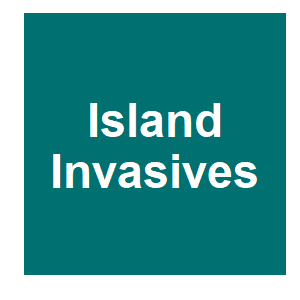
|
Genetic pest management technologies to control invasive rodentsD. Kanavy and D. Threadgill, Island invasives: scaling up to meet the challenge, 2019.
Many strategies exist to manage invasive pests on islands, ranging from poison to trapping, with varying degrees of success. Genetic technologies are increasingly being applied to insect pests, but so far, not to vertebrates. We are implementing a genetic strategy to eradicate ... Keywords: drosophila, Gene drive, homing gene drive, insecticide susceptiblitiy |

|
Trialling gene drives to control invasive species: what, where and how?T. Harvey-Samuel, K. J. Campbell, M. Edgington and L. Alphey, Island invasives: scaling up to meet the challenge, 2019.
The control of invasive species would be enhanced through the addition of novel, more effective and sustainable pest management methods. One control option yet to be trialled in the field is to deploy transgene-based ‘Gene Drives’: technologies which force the inheritance of ... Keywords: drosophila, Gene drive, homing gene drive, insecticide susceptiblitiy |

|
Towards a genetic approach to invasive rodent eradications: assessing reproductive competitiveness between wild and laboratory miceM. Serr, N. Heard and J. Godwin, Island invasives: scaling up to meet the challenge, 2019.
House mice are significant invasive pests, particularly on islands without native mammalian predators. As part of a multi-institutional project aimed at suppressing invasive mouse populations on islands, we aim to create heavily male-biased sex ratios with the goal of causing the ... Keywords: drosophila, Gene drive, homing gene drive, insecticide susceptiblitiy |

|
CRISPR gene drive efficiency and resistance rate is highly heritable with no common genetic loci of large effectChamper, JW, Z. X.; Luthra, A.; Reeves, R.; Chung, J.; Liu, C.; Lee, Y. L.; Liu, J. X.; Yang, E.; Messer, P. W.; Clark, A. G., Genetics, 212:333-341. 2019.
Gene drives could allow for control of vector-borne diseases by directly suppressing vector populations or spreading genetic payloads designed to reduce pathogen transmission. Clustered regularly interspaced short palindromic repeat (CRISPR) homing gene drives work by cleaving ... Keywords: drosophila, Gene drive, homing gene drive, insecticide susceptiblitiy |
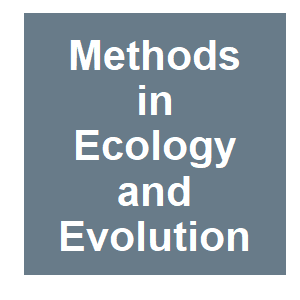
|
MGDrivE: A modular simulation framework for the spread of gene drives through spatially-explicit mosquito populationsSánchez C, HMW, Sean L.; Bennett, Jared B.; Marshall, John M., Methods in Ecology and Evolution, 10:1-24. 2019.
Malaria, dengue, Zika, and other mosquito-borne diseases continue to pose a major global health burden through much of the world, despite the widespread distribution of insecticide-based tools and antimalarial drugs. The advent of CRISPR/Cas9-based gene editing and its ... Keywords: drosophila, Gene drive, homing gene drive, insecticide susceptiblitiy |

|
Engineered resistance to Zika virus in transgenic Aedes aegypti expressing a polycistronic cluster of synthetic small RNAsBuchman, AG, S.; Li, M.; Antoshechkin, I.; Li, H. H.; Wang, H. W.; Chen, C. H.; Klein, M. J.; Duchemin, J. B.; Paradkar, P. N.; Akbari, O. S., Proceedings of the National Academy of Sciences of the United States of America, 116:3656-3661. 2019.
Recent Zika virus (ZIKV) outbreaks have highlighted the necessity for development of novel vector control strategies to combat arboviral transmission, including genetic versions of the sterile insect technique, artificial infection with Wolbachia to reduce population size and/or ... Keywords: drosophila, Gene drive, homing gene drive, insecticide susceptiblitiy |

|
CRISPR in Parasitology: Not Exactly Cut and Dried!Bryant, JMB, S.; Glover, L.; Hutchinson, S.; Rachidi, N., Trends in Parasitology, 35:409-422. 2019.
CRISPR/Cas9 technology has been developing rapidly in the field of parasitology, allowing for the dissection of molecular processes with unprecedented efficiency. Optimization and implementation of a new technology like CRISPR, especially in nonmodel organisms, requires ... Keywords: drosophila, Gene drive, homing gene drive, insecticide susceptiblitiy |

|
The EU regulatory framework on genetically modified organisms (GMOs)Bruetschy, C, Transgenic Research, 28:169-174. 2019.
The European Union (EU) legislation on genetically modified organisms (GMOs) aims to ensure a high level of protection for human, animal and environmental health and a well-functioning EU internal market. The framework regulates the release of GMOs into the environment and their ... Keywords: drosophila, Gene drive, homing gene drive, insecticide susceptiblitiy |
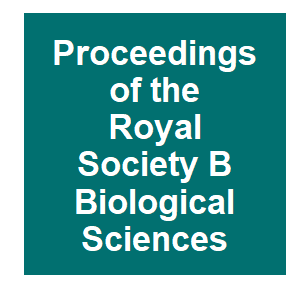
|
Controlling invasive rodents via synthetic gene drive and the role of polyandryManser, AC, S. J.; Sutter, A.; Blondel, D. V.; Serr, M.; Godwin, J.; Price, T. A. R., Proceedings of the Royal Society B-Biological Sciences, 286:9. 2019.
House mice are a major ecosystem pest, particularly threatening island ecosystems as a non-native invasive species. Rapid advances in synthetic biology offer new avenues to control pest species for biodiversity conservation. Recently, a synthetic sperm-killing gene drive ... Keywords: drosophila, Gene drive, homing gene drive, insecticide susceptiblitiy |

|
Gene driving the farm: who decides, who owns, and who benefits?Montenegro de Wit, M, Agroecology and Sustainable Food Systems, 43:1054-1074. 2019.
This commentary essay explores the social and ecological implications of gene-driving agriculture. Keywords: drosophila, Gene drive, homing gene drive, insecticide susceptiblitiy |
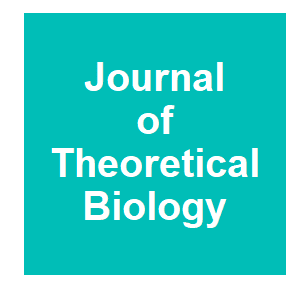
|
Ecological effects on underdominance threshold drives for vector controlD. Khamis, C. El Mouden, K. Kura and M. B. Bonsall, Journal of Theoretical Biology, 456:1-15. 2018.
Here, ecological and epidemiological dynamics are coupled to a model of mosquito genetics to investigate theoretically the impact of different types of underdominance gene drive on disease prevalence. We model systems with two engineered alleles carried either on the same pair ... Keywords: drosophila, Gene drive, homing gene drive, insecticide susceptiblitiy |

|
Why is this African village letting mosquitoes in?BBC, BBC, 2018.
This is a BBC spot about the first release of genetically modified mosquitoes in Africa by the Target Malaria team. Very little information about gene drive but the context of this spot is notable. Keywords: drosophila, Gene drive, homing gene drive, insecticide susceptiblitiy |
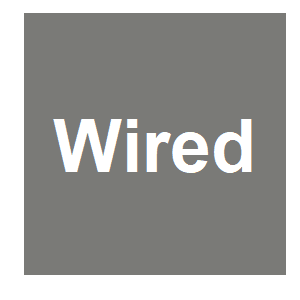
|
A swarm of mutant mosquitoes is out to eradicate malariaO'Mahony, J, Wired, 2018.
Over the next year in the village of Bana, Burkina Faso, a group of scientists will set loose up to 10,000 mosquitoes sprinkled with fluorescent dust. The sterile, male swarm will represent the first ever release of a genetically modified, malaria carrying mosquito species into ... Keywords: drosophila, Gene drive, homing gene drive, insecticide susceptiblitiy |

|
Gene DriveCollins, CH, Scientific American, 2018.
Research into a genetic engineering technology that can permanently change the traits of a population or even an entire species is progressing rapidly. The approach uses gene drives—genetic elements that pass from parents to unusually high numbers of their offspring, thereby ... Keywords: drosophila, Gene drive, homing gene drive, insecticide susceptiblitiy |
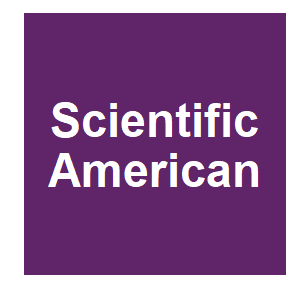
|
Gene DriveCollins, CH, Scientific American, 2018.
Research into a genetic engineering technology that can permanently change the traits of a population or even an entire species is progressing rapidly. The approach uses gene drives—genetic elements that pass from parents to unusually high numbers of their offspring, thereby ... Keywords: drosophila, Gene drive, homing gene drive, insecticide susceptiblitiy |

|
Pest demography critically determines the viability of synthetic gene drives for population controlK. E. Wilkins, T. A. A. Prowse, P. Cassey, P. Q. Thomas and J. V. Ross, Mathematical Biosciences, 305:160-169. 2018.
Synthetic gene drives offer a novel solution for the control of invasive alien species. CRISPR-based gene drives can positively bias their own inheritance, and comprise a DNA sequence that is replicated by homologous recombination. Since gene drives can be positioned to silence ... Keywords: drosophila, Gene drive, homing gene drive, insecticide susceptiblitiy |

|
When Evolution Fights Back Against Genetic EngineeringBorel, B, Quanta Magazine, 2018.
In a crowded auditorium at New York’s Cold Spring Harbor Laboratory in August, Philipp Messer, a population geneticist at Cornell University, took the stage to discuss a powerful and controversial new application for genetic engineering: gene drives.; ; Gene drives can force a ... Keywords: drosophila, Gene drive, homing gene drive, insecticide susceptiblitiy |

|
Gene drives accelerate evolution – but we need brakesTsai, Y-HP, Tony, The Conversation, 2018.
Worried about mice in the kitchen? Fed up with pigeons on your way to work? Teed off by weeds on your lawn? Recent work points to a way that might just reduce – or even eliminate – unwanted species in a short period. The method is based on something called a gene drive – a ... Keywords: drosophila, Gene drive, homing gene drive, insecticide susceptiblitiy |

|
How science could wipe out disease-carrying mosquitoes and save livesElliot, JK, Global News, 2018.
Mosquitoes kill hundreds of thousands of people every year by spreading disease in tropical areas. They’re also the worst part of many cottage weekends and camping trips in North America.; ; But it doesn’t have to be that way.; ; Scientists are developing two methods for ... Keywords: drosophila, Gene drive, homing gene drive, insecticide susceptiblitiy |

|
Gene drive put to work for first time.Arnason, R, The Western Producer, 2018.
A disruptive technology that potentially could eliminate or reduce the need for insecticides may soon be coming to market. In a paper published April 17 in the Proceedings of the National Academy of Sciences, University of California, San Diego biologists announced they have ... Keywords: drosophila, Gene drive, homing gene drive, insecticide susceptiblitiy |

|
Gene DrivesSciLine, SciLine, 2018.
For many years now, scientists have been able to alter genes inside microbial, plant, and animal cells to change organisms’ traits, creating, for example, plants that produce their own protective insecticides and fish that grow to maturity almost twice as fast as normal. But ... Keywords: drosophila, Gene drive, homing gene drive, insecticide susceptiblitiy |

|
Gene Drives – Wundermittel? Biowaffe?Swiss Academy of Sciences SCNAT, Swiss Academy of Sciences, 2018.
Gene drives are genetic elements that skew the pattern of inheritance of a given characteristic in sexually reproduc- ing organisms. They can be used to spread a characteristic that can alter or even reduce the numbers of individuals in wild populations of a certain species. Keywords: drosophila, Gene drive, homing gene drive, insecticide susceptiblitiy |

|
Current CRISPR gene drive systems are likely to be highly invasive in wild populationsNoble, CA, Ben; Church, George M.; Esvelt, Kevin M.; Nowak, Martin A., eLife, 7:e33423. 2018.
Recent reports have suggested that self-propagating CRISPR-based gene drive systems are unlikely to efficiently invade wild populations due to drive-resistant alleles that prevent cutting. Here we develop mathematical models based on existing empirical data to explicitly test ... Keywords: drosophila, Gene drive, homing gene drive, insecticide susceptiblitiy |

|
Engineered Reciprocal Chromosome Translocations Drive High Threshold, Reversible Population Replacement in DrosophilaBuchman, ABI, Tobin; Marshall, John M.; Akbari, Omar S.; Hay, Bruce A., ACS Synthetic Biology, 7:1359-1370. 2018.
Replacement of wild insect populations with transgene-bearing individuals unable to transmit disease or survive under specific environmental conditions using gene drive provides a self-perpetuating method of disease prevention. Mechanisms that require the gene drive element and ... Keywords: drosophila, Gene drive, homing gene drive, insecticide susceptiblitiy |

|
Gene drive systems: Do they have a place in agricultural weed management?Neve, P, Pest Management Science, 74:2672-2679. 2018.
There is a pressing need for novel control techniques in agricultural weed management. Direct genetic control of agricultural pests encompasses a range of techniques to introduce and spread novel, fitness-reducing genetic modifications through pest populations. Recently, the ... Keywords: drosophila, Gene drive, homing gene drive, insecticide susceptiblitiy |

|
Identifying knowledge gaps for gene drive research to control invasive animal species: The next CRISPR stepMoro, DB, Margaret; Kennedy, Malcolm; Campbell, Susan; Tizard, Mark, Global Ecology and Conservation, 13:e00363. 2018.
Invasive animals have been linked to the extinctions of native wildlife, and to significant agricultural financial losses or impacts. Current approaches to control invasive species require ongoing resources and management over large geographic scales, and often result in the ... Keywords: drosophila, Gene drive, homing gene drive, insecticide susceptiblitiy |

|
Gene drive inhibition by the anti-CRISPR proteins AcrIIA2 and AcrIIA4 in Saccharomyces cerevisiaeBasgall, EMG, S. C.; Goeckel, M. E.; Giersch, R. M.; Roggenkamp, E.; Schrock, M. N.; Halloran, M.; Finnigan, G. C., Microbiology-Sgm, 164:464-474. 2018.
Given the widespread use and application of the clustered regularly interspaced short palindromic repeats (CRISPR)/Cas gene editing system across many fields, a major focus has been the development, engineering and discovery of molecular means to precisely control and regulate ... Keywords: drosophila, Gene drive, homing gene drive, insecticide susceptiblitiy |

|
Rats join mosquitoes as targets for ‘gene drive’ pest control.Hirschler, B, Reuters, 2017.
Rodents have joined mosquitoes in the cross-hairs of scientists working on a next-generation genetic technology known as “gene drive” to control pests.; Researchers in Scotland said on Tuesday they had developed two different ways to disrupt female fertility in rats and mice, ... Keywords: drosophila, Gene drive, homing gene drive, insecticide susceptiblitiy |

|
Open, Local, and ObligatedYale University, , 2017.
Kevin Esvelt, PhD, assistant professor at the MIT Media Lab and leader of the Sculpting Evolution Group talks about the need for new scientific structures based on transparency and open. This lecture was given at the 2017 Editing Nature Summit. Keywords: drosophila, Gene drive, homing gene drive, insecticide susceptiblitiy |
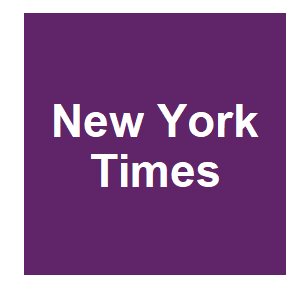
|
‘Gene Drives’ Are Too Risky for Field Trials, Scientists SayZimmer, C, New York Times, 2017.
In 2013, scientists discovered a new way to precisely edit genes — technology called Crispr that raised all sorts of enticing possibilities. Scientists wondered if it might be used to fix hereditary diseases, for example, or to develop new crops.; ; One of the more intriguing ... Keywords: drosophila, Gene drive, homing gene drive, insecticide susceptiblitiy |
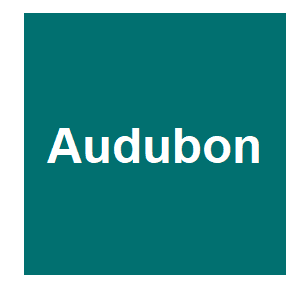
|
How Genetically Modified Mice Could One Day Save Island BirdsBorel, B, Audubon, 2017.
The silent black-and-white footage opens on a seemingly tranquil setting: a burrow where an Atlantic Petrel tends to its chick. Then mice begin scurrying in and out of frame. The dark blurs jostle the adult, darting up to the exposed chick and tearing off bloody bites. They’re ... Keywords: drosophila, Gene drive, homing gene drive, insecticide susceptiblitiy |

|
Illustrated experiment: modifying mosquitoes to save millions of livesVolpicelli, G, Wired, 2017.
Malaria, a disease transmitted by a type of mosquito called Anopheles, kills 500,000 people every year, most of them in Africa. But Andrea Crisanti, professor of molecular parasitology at London's Imperial College, has a plan to eradicate it in many countries. Keywords: drosophila, Gene drive, homing gene drive, insecticide susceptiblitiy |

|
Is it time for synthetic biodiversity conservation?Piaggio, AJS, G.; Seddon, P. J.; Alphey, L.; Bennett, E. L.; Carlson, R. H.; Friedman, R. M.; Kanavy, D.; Phelan, R.; Redford, K. H.; Rosales, M.; Slobodian, L.; Wheeler, K., Trends in Ecology & Evolution, 32:97-107. 2017.
Evidence indicates that, despite some critical successes, current conservation approaches are not slowing the overall rate of biodiversity loss. The field of synthetic biology, which is capable of altering natural genomes with extremely precise editing, might offer the potential ... Keywords: drosophila, Gene drive, homing gene drive, insecticide susceptiblitiy |

|
Gene drives do not always increase in frequency: from genetic models to risk assessmentde Jong, TJ, Journal Fur Verbraucherschutz Und Lebensmittelsicherheit-Journal of Consumer Protection and Food Safety, 12:299-307. 2017.
Homing genes encode endonucleases that make a double stranded break in the DNA, destroying a target site on the homologous chromosome. When the cell repairs the break the homing allele is copied, converting a heterozygote into a homozygote. This results in gene drive (GD), an ... Keywords: drosophila, Gene drive, homing gene drive, insecticide susceptiblitiy |

|
Sperm competition suppresses gene drive among experimentally evolving populations of house miceManser, AL, A. K.; Simmons, L. W.; Firman, R. C., Molecular Ecology, 26:5784-5792. 2017.
Drive genes are genetic elements that manipulate the 50% ratio of Mendelian inheritance in their own favour, allowing them to rapidly propagate through populations. The action of drive genes is often hidden, making detection and identification inherently difficult. Yet drive ... Keywords: drosophila, Gene drive, homing gene drive, insecticide susceptiblitiy |

|
A transatlantic perspective on 20 emerging issues in biological engineeringWintle, BCB, C. R.; Rhodes, C.; Molloy, J. C.; Millett, P.; Adam, L.; Breitling, R.; Carlson, R.; Casagrande, R.; Dando, M.; Doubleday, R.; Drexler, E.; Edwards, B.; Ellis, T.; Evans, N. G.; Hammond, R.; Haseloff, J.; Kahl, L.; Kuiken, T.; Lichman, B. R.; Matthewman, C. A.; Napier, J. A.; OhEigeartaigh, S. S.; Patron, N. J.; Perello, E.; Shapira, P.; Tait, J.; Takano, E.; Sutherland, W. J., eLife, 6:21. 2017.
Advances in biological engineering are likely to have substantial impacts on global society. To explore these potential impacts we ran a horizon scanning exercise to capture a range of perspectives on the opportunities and risks presented by biological engineering. We first ... Keywords: drosophila, Gene drive, homing gene drive, insecticide susceptiblitiy |

|
Using Gene Drive to Control MalariaThe Scientist, The Scientist, 2016.
This article provides illustrations for how gene drive works, how gene drives spread, and how gene drive could be used to control malaria using population-wide gene knockout, skewed sex ratio, and population-wide gene knock-in techniques. Visit the article to view all ... Keywords: drosophila, Gene drive, homing gene drive, insecticide susceptiblitiy |

|
National Academies hit the brakes on gene drive-modified organismsAbbasi, J., JAMA-Journal of the American Medical Association, 316:482-483. 2016.
Despite their potential for fighting Zika, malaria, and other public health scourges, organisms that have been engineered to quickly spread genetic modifications through a population—and possibly an entire species—are not ready for release into the wild, a committee of ... Keywords: drosophila, Gene drive, homing gene drive, insecticide susceptiblitiy |

|
Gene drives: The good, the bad, and the hypeOuagrham-Gormley, SBV, Kathleen M., The Bulletin of the Atomic Scientists, 2016.
Since the early 2000s, many advances in the life sciences, such as the artificial synthesis of the poliovirus and the gain-of-function experiments that enhanced the transmissibility of the H5N1 flu virus, have led to warnings that bioweapons development would soon be getting ... Keywords: drosophila, Gene drive, homing gene drive, insecticide susceptiblitiy |

|
Genetic Engineering and Diseases – Gene Drive & MalariaKurzgesagt – In a Nutshell, 2016.
This video focuses on the basic applications of gene drive to malaria eradication and leave the viewer with the question “what do you think?” Keywords: drosophila, Gene drive, homing gene drive, insecticide susceptiblitiy |

|
Extinctions to order: Gene-ocide.The Economist, The Economist, 2016.
IN A competition to find the world’s least-loved animal, the mosquito would be hard to beat. Only a few species of the insect carry the parasites that cause human diseases such as West Nile virus, dengue and yellow fever, but the harm they cause is enormous. Malaria kills more ... Keywords: drosophila, Gene drive, homing gene drive, insecticide susceptiblitiy |
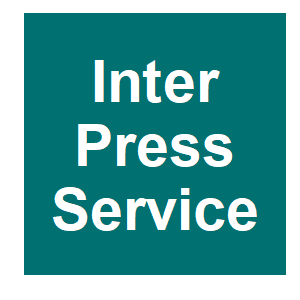
|
Biodiversity, GMOs, Gene Drives and the Militarised MindShiva, V, Inter Press Service, 2016.
A recent report from the National Academy of Science of The United States, titled Gene Drives on the Horizon : Advancing Science, Navigating Uncertainty, and Aligning Research with Public Values”, warns:; “One possible goal of release of a gene-drive modified organism is to ... Keywords: drosophila, Gene drive, homing gene drive, insecticide susceptiblitiy |

|
Re-Coding for ConservationHawkes, A, Bay Nature Magazine, 2016.
very year, as summer turns to fall, the mouse population on the South Farallon Islands explodes to plague-like densities, numbering 490 mice per acre, among the highest found on any island in the world. The scientists who live and work there describe the assault of the invasive ... Keywords: drosophila, Gene drive, homing gene drive, insecticide susceptiblitiy |

|
When Extinction Is a Humanitarian CauseAdelman, Z, MIT Technology Review, 2016.
Humans have driven species to extinction through our hunger, our ignorance, our desire for economic growth, and our indifference. Will one species of mosquito be the first we eliminate for humanitarian ; The mosquito is Aedes aegypti. It is commonly known as the yellow fever ... Keywords: drosophila, Gene drive, homing gene drive, insecticide susceptiblitiy |

|
CRISPR-Cas9: Gene Drive SafeguardsWyss Institute, Harvard University, 2015.
In this animation, learn how effective safeguarding mechanisms developed at the Wyss Institute and Harvard Medical School can be applied to ensure gene drive research is done responsibly in the laboratory. These safeguards enable responsible scientific investigation into how gene ... Keywords: drosophila, Gene drive, homing gene drive, insecticide susceptiblitiy |

|
What is a Gene Drive?STAT, STAT, 2015.
This video produced by STAT, an e-news site focusing on health and medicine (https://www.statnews.com/). This video simply illustrates what geneticists mean by gene drive, and how homing-based gene drive work. (Note: it does not indicate that there are other mechanisms of gene ... Keywords: drosophila, Gene drive, homing gene drive, insecticide susceptiblitiy |

|
Playing God with mosquitoes? We humans have loftier aims.Pugh, J, The Conversation, 2015.
In a startling development in “gene-drive” technology, a team of researchers at the University of California has succeeded in creating genetically modified mosquitoes incapable of spreading the malaria parasite to humans, and which could potentially spread this trait rapidly ... Keywords: drosophila, Gene drive, homing gene drive, insecticide susceptiblitiy |

|
What’s a Gene Drive? And what are the risks and benefits?Risk Bites, Arizona State University, 2015.
This video uses ‘white board cartooning’ as a means of illustrating concepts. Keywords: drosophila, Gene drive, homing gene drive, insecticide susceptiblitiy |

|
What is Gene Drive?Entomological Society of America, 2015.
A fact sheet from the Entomological Society of America. Keywords: drosophila, Gene drive, homing gene drive, insecticide susceptiblitiy |

|
Gene DriveWyss Institute, Harvard University, 2014.
This short video produced by the Wyss Institute and Harvard School of Public Health illustrates in very basic terms the concept of gene drive as distorted patterns of inheritance. Keywords: drosophila, Gene drive, homing gene drive, insecticide susceptiblitiy |

|
Problem formulation in the environmental risk assessment for genetically modified plantsWolt, JDK, Paul; Raybould, Alan; Fitzpatrick, Julie W.; Burachik, Moisés; Gray, Alan; Olin, Stephen S.; Schiemann, Joachim; Sears, Mark; Wu, Felicia, Transgenic Research, 19:425-436. 2010.
Problem formulation is the first step in environmental risk assessment (ERA) where policy goals, scope, assessment endpoints, and methodology are distilled to an explicitly stated problem and approach for analysis. The consistency and utility of ERAs for genetically modified (GM) ... Keywords: drosophila, Gene drive, homing gene drive, insecticide susceptiblitiy |

|
Population replacement in Culex fatigens by means of cytoplasmic incompatibility. Laboratory experiments with non-overlapping generationsC. F. Curtis and T. Adak, Bulletin of the World Health Organization, 51:249-255. 1974.
Bidirectional cytoplasmic incompatibility in the Culex pipiens complex appears to provide a mechanism for the replacement of a wild population by a strain refractory to filaria or a strain made partly sterile by a translocation. As a preliminary test of the feasibility of the ... Keywords: drosophila, Gene drive, homing gene drive, insecticide susceptiblitiy |

Contact
David O’Brochta
Foundation for the
National Institutes of Health
geneconvenevi@fnih.org
RSS

